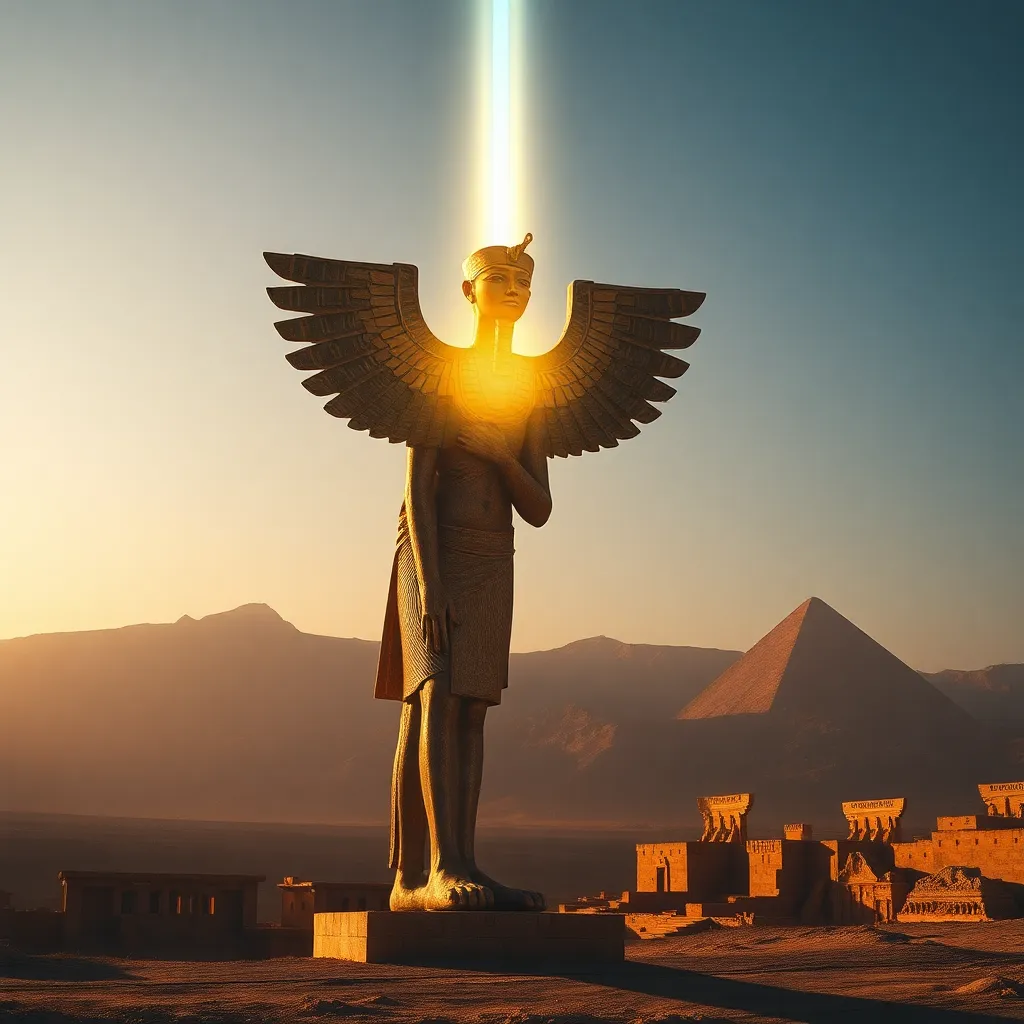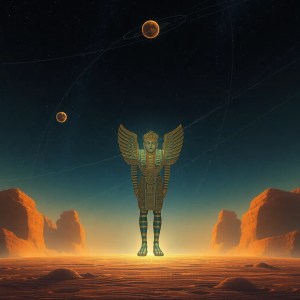The Aten and the Symbolism of Light in Ancient Egypt
I. Introduction
The Aten, often represented as a solar disk, emerged as a significant deity in Ancient Egyptian mythology, particularly during the reign of Pharaoh Akhenaten. As the embodiment of the sun’s rays, the Aten personified not only the physical light but also the spiritual illumination that was deeply woven into the fabric of Egyptian culture. This article aims to explore the multifaceted symbolism of the Aten, the historical context of its rise, and its enduring impact on Ancient Egyptian spirituality and artistry.
II. Historical Context of the Aten
The Aten’s prominence began during the 18th Dynasty, particularly under Akhenaten, who is often regarded as a revolutionary ruler due to his radical religious reforms.
A. Rise of the Aten during the reign of Akhenaten
Akhenaten, originally named Amenhotep IV, shifted the religious landscape of Egypt from polytheism to a form of monotheism centered on the worship of the Aten. This marked a significant departure from the traditional pantheon of gods, as Akhenaten sought to elevate the Aten above all other deities.
B. Aten’s role in the religious reforms of the Amarna Period
- Establishment of a new capital at Akhetaten (modern-day Amarna).
- Creation of temples dedicated solely to the Aten.
- Promotion of hymns and prayers that celebrated the Aten as the sole creator and sustainer of life.
C. Comparison with traditional Egyptian gods
Unlike traditional gods such as Ra, Isis, or Osiris, who were often depicted with human forms and complex mythologies, the Aten was primarily represented as a sun disk emitting rays, symbolizing a more abstract and universal concept of divinity.
III. The Iconography of the Aten
The artistic representations of the Aten played a critical role in communicating its significance and the theological shifts of the period.
A. Artistic representations of the Aten
The Aten is frequently depicted as a circular disk with rays extending downward, often ending in hands that reach out to offer the ankh, the symbol of life, to the royal family.
B. Symbolic meanings of the sun disk and rays
- The sun disk represents the source of life and energy.
- The rays symbolize the Aten’s protective and nurturing qualities.
C. Differences in depiction between the Aten and Ra
While both the Aten and Ra are associated with the sun, Ra is often depicted as a falcon-headed man, embodying a more anthropomorphic and complex personality. In contrast, the Aten’s simpler, more abstract representation reflects a shift towards a more direct and transcendent form of worship.
IV. Theological Significance of Light
In Ancient Egyptian belief, light held profound meaning, representing not just the physical illumination but also deeper spiritual truths.
A. Light as a symbol of life and creation
Light was seen as essential for life, growth, and regeneration. The Aten, as a solar deity, encapsulated the life-giving power of the sun, which was crucial for agriculture and sustenance.
B. The Aten’s association with truth and justice
The Aten was also linked to the concepts of truth (Ma’at) and justice. The rays of the Aten were thought to provide not only physical light but also moral clarity and righteousness.
C. The concept of divine illumination in Egyptian beliefs
The notion of divine illumination extended beyond mere physical light; it encompassed the idea that understanding and enlightenment were granted through the favor of the Aten.
V. The Aten and Royal Power
The relationship between the Aten and royal authority was pivotal in Akhenaten’s reign, serving to legitimize his rule and reinforce his divine status.
A. How the Aten was used to legitimize Akhenaten’s rule
By positioning himself as the sole intermediary between the Aten and the people, Akhenaten asserted his power and divine right to rule. This created a direct connection between the pharaoh and the divine.
B. The role of the Aten in royal iconography
- Depictions of the royal family receiving ankh from the Aten.
- Use of solar imagery to emphasize the pharaoh’s divinity.
C. The impact of Aten worship on Egyptian politics
The centralization of worship around the Aten disrupted the traditional priesthoods and temple economy, leading to significant tensions within Egyptian society.
VI. The Aten’s Influence on Art and Architecture
The artistic expressions and architectural innovations during the Amarna Period reflect the unique theology of the Aten.
A. Changes in artistic styles during the Amarna Period
Art from this era is characterized by a more naturalistic style, focusing on the human form and daily life, differing greatly from the formalism of previous dynasties.
B. Architectural innovations inspired by the Aten
Temples dedicated to the Aten were constructed with open-air designs to allow for sunlight to penetrate, symbolizing divine presence.
C. The legacy of Aten worship in later Egyptian art
Although the Aten cult declined, its influence can be seen in later artistic styles that incorporated elements of naturalism and light symbolism.
VII. Decline of the Aten Cult
Following Akhenaten’s death, the worship of the Aten faced a swift decline as Egypt returned to its traditional polytheistic practices.
A. The return to traditional polytheism after Akhenaten’s reign
Subsequent pharaohs attempted to erase Akhenaten’s legacy, reinstating the traditional gods and dismantling the temples dedicated to the Aten.
B. The erasure of the Aten from historical records
The systematic removal of Aten references from monuments and tombs highlights the efforts to suppress this unique monotheistic phase of Egyptian history.
C. Modern interpretations and rediscovery of the Aten
In recent years, scholars have revisited the Aten’s significance, exploring its impact on religious thought and its place within the broader context of Egyptian spirituality.
VIII. Conclusion
The Aten represents a fascinating chapter in Ancient Egyptian history, embodying the complex interplay between divinity, power, and spirituality. Its symbolism of light not only reflects the Egyptians’ reverence for the sun but also illustrates a profound understanding of life, truth, and justice.
As we reflect on the legacy of the Aten, we gain insights into the transformative power of religious belief and the enduring resonance of light as a symbol of enlightenment and divinity in the ancient world.




